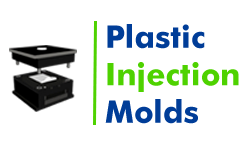Exploring The Role Of An Injection Mold Designer

An injection mold designer is someone who designs the blueprints and details for molds used in injection molding. They collaborate with engineers and manufacturers to make sure the molds match the needs of each project. Using special software and tools, they create specific designs that determine how the final product will look. The designer's job is to ensure that the molds are just right for making the plastic parts. They pay attention to every detail, like the shape, size, and special features needed. In short, these mold designers play a crucial role in making sure everything runs smoothly in the injection molding process.
Understanding Plastic Injection Mold Design: Basics and Beyond
Plastic injection mold design is crucial in manufacturing. It involves creating molds to shape hot plastic into specific forms. Basic design elements include mold cavity, core, gating system, and cooling channels. Advanced considerations like parting lines, draft angles, and venting ensure optimal mold performance.
A well-designed injection mold is vital for consistent and high-quality results in manufacturing. By understanding both basic and advanced concepts of injection mold design, manufacturers can improve production efficiency and product quality. It's important to consider factors like material selection, production volume, and part complexity when designing molds. With proper understanding and implementation of mold design principles, manufacturers can meet market demands effectively and produce superior plastic products.
Unveiling Different Injection Mold Designs
Injection mold designs come in various types, each serving different purposes in the manufacturing process. Single-cavity molds create one part at a time, suitable for small-scale production. Multi-cavity molds produce several identical parts simultaneously, speeding up production for larger quantities. Hot runner molds keep the plastic material hot as it flows through the mold, reducing waste and improving efficiency. Cold runner molds, on the other hand, use a separate channel to inject the plastic material, ideal for certain types of products. Understanding the differences between these mold designs helps manufacturers choose the most suitable option for their specific production needs. Each design has its advantages and considerations, influencing the overall efficiency and quality of the injection molding process.
Mastering Mold Design for Injection Molding Processes
To excel in mold design for injection molding, understanding material behavior, part geometry, and manufacturing needs is essential. Designers must account for draft angles, wall thickness, and gate placement to optimize mold performance. Advanced tools like mold flow analysis aid in identifying potential issues and refining designs for better results. Proper cooling and venting systems are crucial for efficient production and high-quality parts. A mastery of mold design enhances production efficiency, reduces defects, and improves product quality. Continuous learning and adaptation to new technologies are vital for staying competitive in the injection molding industry.
Essential Considerations for Designing Injection Molded Parts
When designing injection molded parts, several essential considerations must be kept in mind. These include the part's geometry, material selection, and production volume. Designers must ensure proper wall thickness, draft angles, and undercuts to facilitate the molding process and ensure part quality. Material selection is crucial for meeting performance requirements and cost-effectiveness. Production volume determines the type of mold and manufacturing process used. Other factors such as shrinkage, warpage, and surface finish must also be considered to achieve the desired part quality. By carefully addressing these considerations, designers can optimize the design of injection molded parts for efficient production and high-quality end products.
If you're seeking an injection mold designer, our company, Plastic Injection Molds, is here to assist you. We specialize in creating customized molds tailored to your specific requirements. With our expertise and precision, we ensure that you get exactly what you need for your injection molding projects. Whether you're looking for molds for automotive parts, consumer goods, or medical devices, we can deliver high-quality solutions. Trust us to provide you with reliable and efficient mold-making services that meet your expectations and help bring your ideas to life seamlessly.
Frequently Asked Question
1. What does an injection mold designer do?
An injection mold designer is a professional who creates detailed plans for molds used in injection molding processes.
2. Can one mold design be used for different types of plastic products?
Mold designs can be customized for different products, but specific considerations are needed based on the product's requirements.
3. How does mold design impact the cost of injection molding?
Efficient mold design can contribute to cost-effectiveness by minimizing material waste, reducing cycle times, and improving overall production efficiency.
4. Can a single injection mold have multiple designs for different parts?
Multi-cavity molds allow for the production of multiple identical parts simultaneously, streamlining the manufacturing process.
5. How long does it take to design an injection mold for a specific product?
The time to design an injection mold varies based on complexity, but it typically involves detailed planning and collaboration with engineers and manufacturers.




